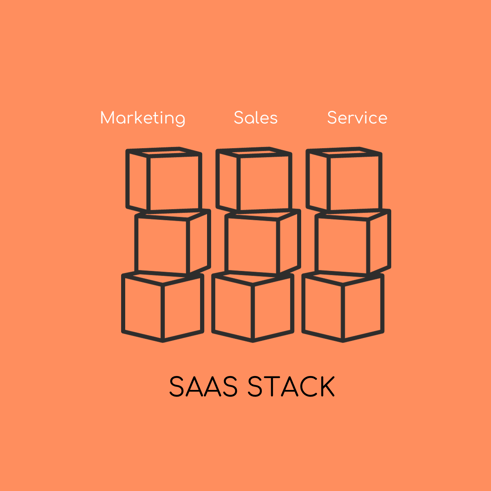As a business owner, you're always looking for ways to grow and improve your operations. One of the most common ways to do this is by using software-as-a-service (SaaS) apps. These apps can help you streamline your processes, automate tasks, and improve collaboration between teams. However, using too many SaaS apps can actually hinder your growth rather than help it. In this article, we'll explore why it's better to invest in a platform that can enable all teams rather than relying on multiple SaaS apps.
It's often said that more isn't always better. This is especially true in our fast-paced, technology-driven world. In the ever-evolving landscape of business software, it's easy to get caught up in the allure of numerous applications promising to revolutionise your operations. However, as with any aspect of life, having an excess of things can quickly lead to clutter and chaos.
Imagine your digital workspace as a physical desk. If you fill it with an abundance of tools, papers, and gadgets, it becomes difficult to stay organised and find what you need. The same principle applies to your business technology stack. Using too many SaaS apps can overwhelm your teams and hinder their ability to efficiently collaborate and achieve their goals.
By investing in a platform that can enable all teams, you can create a streamlined and harmonious digital environment. This unified platform acts as a central hub, providing a common interface, seamless integration, and efficient communication channels. With all teams working from the same page and having access to the same information, collaboration becomes effortless, and the potential for confusion, duplication of efforts, and errors diminishes significantly.
Furthermore, the financial implications of using multiple SaaS apps should not be overlooked. Each app often comes with its own subscription fee, which can quickly accumulate, especially as your team grows. Additionally, you may find yourself having to pay for additional storage or user licenses for each individual app. However, by investing in a platform that can enable all teams, you consolidate your software expenses, ultimately saving money in the long run.

Another vital aspect to consider is the impact on your team's productivity and well-being. Juggling multiple SaaS apps means constantly adapting to different interfaces, learning curves, and frequent updates. This can be overwhelming and time-consuming for your team members, hindering their ability to focus on their core responsibilities and hampering their overall job satisfaction.
By embracing a platform that can enable all teams, you simplify your software stack and create an environment that is intuitive and easy to use. Your team members can quickly become familiar with a unified interface, reducing the time spent on training and the frustration associated with constantly adapting to new tools. This streamlined approach allows your team to focus their energy on what truly matters – delivering exceptional results and driving your business forward.
So, what should you look for in a platform that can enable all teams?
Firstly, it should have a wide range of features that can support all aspects of your business, from sales and marketing to finance and operations. This means that it should have tools for lead generation and customer relationship management. Having all these features in one platform eliminates the need for multiple apps and ensures that all teams have access to the tools they need to succeed.
Secondly, it should be easy to use and intuitive, with a user-friendly interface and clear documentation. The last thing you want is for your teams to spend hours trying to figure out how to navigate a complex software. Look for a platform that is designed with simplicity in mind, with intuitive menus and easy-to-understand workflows. Additionally, having clear documentation and support resources can help your teams quickly get up to speed and make the most of the platform's capabilities.
Thirdly, it should be scalable, so that it can grow with your business and adapt to your changing needs. As your business expands, you may need to add more users, increase storage capacity, or integrate with other tools. A platform that is scalable allows you to easily make these adjustments without disrupting your operations or requiring a complete overhaul of your software stack. This flexibility ensures that your platform can support your business both now and in the future.
When looking for a platform that can enable all teams, consider its range of features, usability, and scalability. By choosing a platform that meets these criteria, you can streamline your operations, enhance collaboration, and drive productivity across your organisation. Investing in the right platform is an investment in the success and growth of your business.
In conclusion, in a world inundated with countless SaaS apps, it's crucial to remember that more isn't always better. Investing in a platform that can enable all teams offers numerous advantages, including streamlined processes, cost savings, and improved collaboration and productivity. So, take the time to research and find the right platform for your business, and witness the transformative power of a unified digital HQ.
Tags:
Business Owner
September 25, 2023

